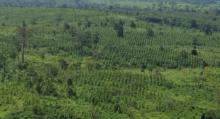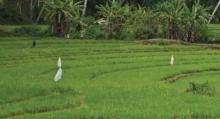Land Library Search
Through our robust search engine, you can search for any item of the over 73,000 highly curated resources in the Land Library.
If you would like to find an overview of what is possible, feel free to peruse the Search Guide.
/ library resources
Showing items 1 through 9 of 103.A pilot project in Chile explores how to ensure that farmers are properly rewarded for managing their land and livestock in ways that safeguard supplies of clean drinking water to users further downstream.*
Restoration in Niger and neighbouring countries has helped to “re-green” vast areas of rural West Africa with impressive results for agriculture and livelihoods – and at very low cost.*
Pig-rearing, essential oils, fruit trees and beekeeping: establishing additional sources of income has been key to a restoration project on the biodiversity-rich island of Madagascar.*
A private company is restoring degraded forest reserves in Ghana with commercial as well as native tree species, applying a business model that also brings strong community and environmental benefits.*
After a quarter-century of restoration in a heavily degraded river basin in Costa Rica, a “model forest” platform is helping a local foundation to promote the benefits of its work and boost business in an economically depressed region.*
Farmers in poor rural areas of Guatemala are learning how agroforestry incorporating the culturally important breadnut tree can boost their nutrition and income as well as restoring degraded land through deforestation*.
The objective of the India Ecosystem Services Project (ESIP), which is under preparation, is to improve forest quality, land management, and nontimber forest produce (NTFP) benefits for forest dependent communities in selected landscapes in Madhya Pradesh and Chhattisgarh.
This project aims to strengthen the National Protected Areas System and to support sustainable land use and restoration practices in selected areas of the Dry Corridor of Nicaragua, in order to foster biodiversity conservation, resilient landscapes, an
Burundi’s economy is dominated by small-scale agriculture practiced on the slopes of hills and mountains. The burgeoning population and an overwhelming reliance on natural resources by 90 percent of the population have both caused aggravated environmental degradation.









